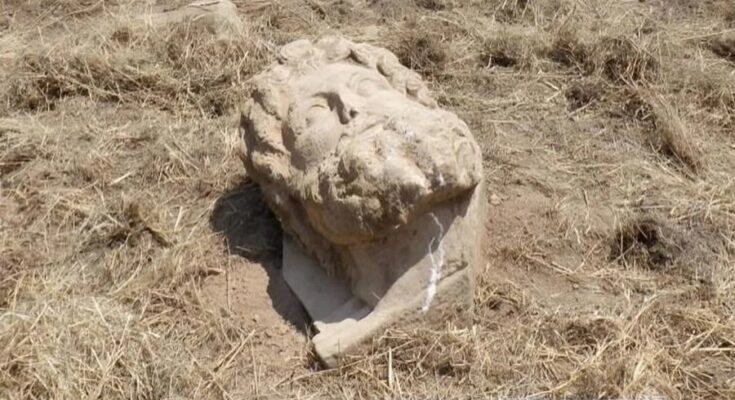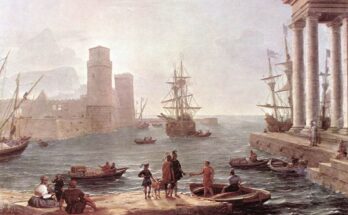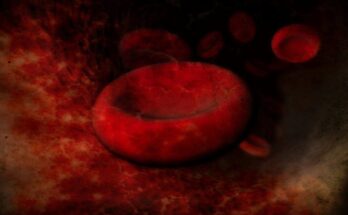A stunning marble head of Zeus has been unearthed in the ancient city of Aphrodisias, western Turkey.
Aphrodisias, named after Aphrodite, the Greek goddess of love was a small ancient Greek city in the historic Caria cultural region and is included in UNESCO’s World Heritage List.
The announcement was made by Turkey’s Minister of Culture and Tourism, Mehmet Nuri Ersoy, who described the find as “a unique discovery in Aphrodisias.”
The colossal marble head, which stands 66 centimeters tall, was found inverted near the surface, approximately 50 meters west of the Temple of Aphrodite.
It is believed to have been part of an architectural console or similar structure. Made from a single block of medium-grained Aphrodisias marble, the head dates back to the 2nd-3rd century CE.
Minister Ersoy stated: “The marble head, which has met daylight again after centuries, showcases the magnificence of Zeus, the most powerful and important god in Greek mythology.”
He also noted that the artifact’s sophisticated drill work on the hair and beard is indicative of the high-level sculpting techniques employed by Aphrodisian artists. “Our efforts to carry Anatolia’s rich past to future generations will continue without slowing down,” Ersoy added.

Zeus marble head reflects the high level of craftsmanship
Professor Roland R. R. Smith from Oxford University, who heads the Aphrodisias excavation team, told the Anadolu Agency that this head is an important artifact, reflecting the high level of craftsmanship characteristic of Roman portraiture.
The sculpture features sophisticated Roman portrait art, including intricate details achieved through a costly technique known as drilling, typically found in high-quality portraits.
He described the discovery as extraordinary, demonstrating how Aphrodisias continues to astonish with its remarkable artifacts. The Zeus head combines elements of both architectural sculpture and advanced portraiture.
Aphrodisias, known as one of the most important art centers of the ancient Greek and Roman period, was famous for its marble quarries and the skilled sculptors who worked there.
The Temple of Aphrodite was a focal point of the town, but the character of the building was altered when it became a Christian basilica. The Aphrodisian sculptors became renowned and benefited from a plentiful supply of marble close at hand.

At the ancient site, there is a beautiful amphitheater that must have been the setting for great performances of culture and arts.
There is also an ancient stadium described as “the largest ancient stadium in the world and one of the best preserved.”
It is 270 meters long. There would have been times when thirty thousand people would have filled those spots, shouting and cheering at the sports taking place below.
Sarcophagi were recovered in various locations, most frequently decorated with designs consisting of garland and columns. Pilasters have been found showing what are described as “peopled scrolls” with figures of people, birds and animals entwined in acanthus leaves.



